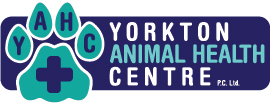Library
-
Cats that exhibit repetitive behaviors that are difficult to interrupt may be diagnosed with a compulsive disorder. Many of these behaviors have a physical basis and a thorough medical examination is always important. Anxiety and frustration can also contribute to the development of compulsive disorders. Treatment includes addressing underlying medical components and reducing stressors in the physical and social environment.
-
Many cats are active through the night. Often, they have slept all day and are not tired at night. Enrichment that includes social play and interactive toys can solve the problem. A medical and behavioral workup should be done if your cat has only recently begun to be active at night, as there may be an underlying illness.
-
Some cats that appear to be perfectly comfortable resting in a lap can suddenly turn around, bite, and run away. There are ways to reduce the likelihood that your cat will bite you. Treatment will depend on the specific reason for the behavior.
-
Scratching is normal feline behavior. Cats use their claws to mark territory, climb to safety, hunt prey, and stretch their bodies, among other important routine behaviors. Cats that live primarily or exclusively indoors are still inclined to claw prominent objects and do not discriminate based on an object’s personal value, which may be undesirable to their owners. Providing multiple appropriate scratching surfaces that suit your cat's preferences and using positive reinforcement when your cat scratches these provided surfaces can be helpful. If you notice changes in your cat’s pattern of scratching, check with your veterinarian. Your cat may be experiencing pain or another health condition. Next, a behavioral consultation may be needed to identify the underlying behavioral condition and to find an appropriate treatment.
-
A cesarean section is a surgery to remove kittens from the uterus and is most commonly performed as an emergency procedure when there is difficulty with natural birth. During the immediate recovery period, the mother and kittens must be closely monitored and begin eating/nursing within a few hours. If you have any concerns about their health, you should immediately have your veterinarian examine the kittens and their mother.
-
Chediak-Higashi Syndrome is a rare genetic disease of smoke-blue Persian cats. The condition affects how the body processes waste products, resulting in changes within the body’s cells and leading to abnormal pigmentation of the skin and coat. The condition can lead to eye abnormalities and problems with blood clotting, but most cats can have a normal lifespan with careful health monitoring.
-
The birth of a baby or the adoption of a new child can be associated with both excitement and stress. It is important to prepare your pet for the new addition. Before the baby arrives, introduce novel sounds and scents, and be sure your pet has access to safe resting spaces. Socialize your young pet to children from the start. Children should be directly supervised by an adult when they interact with pets.
-
Chin acne in cats is a poorly understood disorder of follicular keratinization (the overproduction of keratin, a protein found in the outer layer of skin). If this excess keratin is trapped in the hair follicle, comedones (blackheads) form. Pustules (pimples) may form if bacteria infect the comedones. The underlying causes are not fully understood but may be associated with excess sebum production, viral infection, immunosuppression, stress, or poor grooming. Treatment options are available and often involve improved hygiene.
-
Chlamydial conjunctivitis in cats is highly contagious and can look similar to herpes conjunctivitis. Young cats and kittens are especially vulnerable to this infection, although chlamydia can be detected in cats of all ages. It is one of the most common causes of infectious conjunctivitis in cats. This handout describes the clinical signs and how this condition can be treated or prevented.
-
Cholangitis/cholangiohepatitis in cats refers to inflammation of the bile duct or a combination of inflammation of the bile duct, gallbladder, and surrounding liver tissue. The clinical signs, diagnosis, treatments, and prognosis of the conditions are outlined in this handout.


